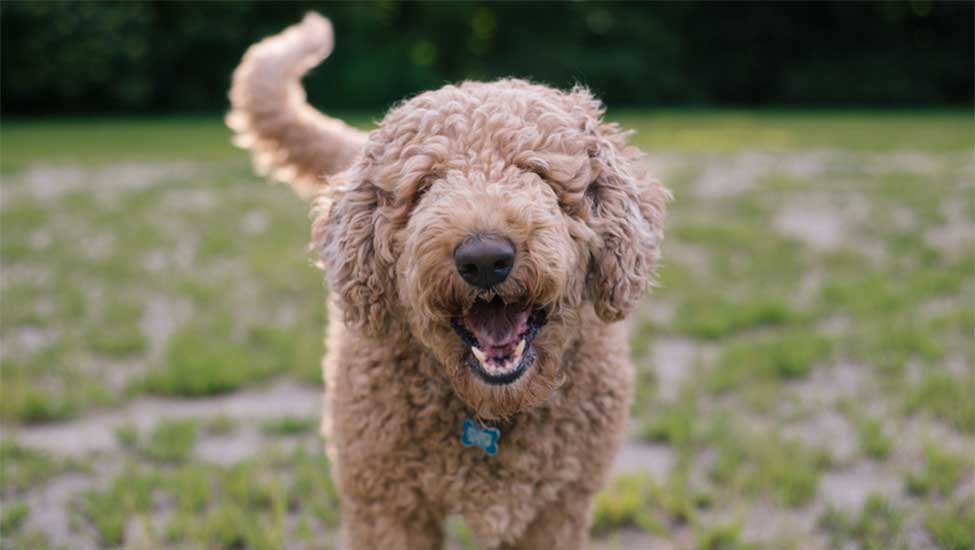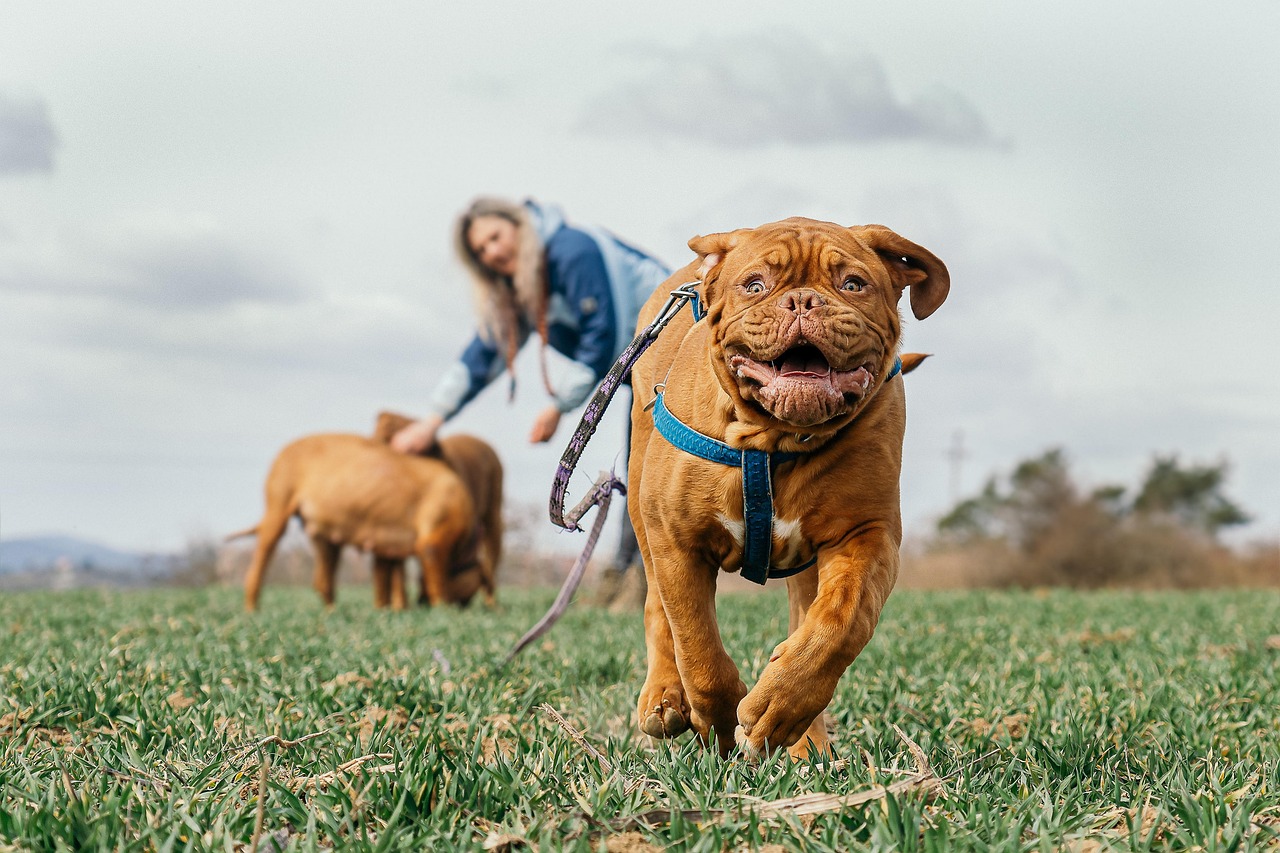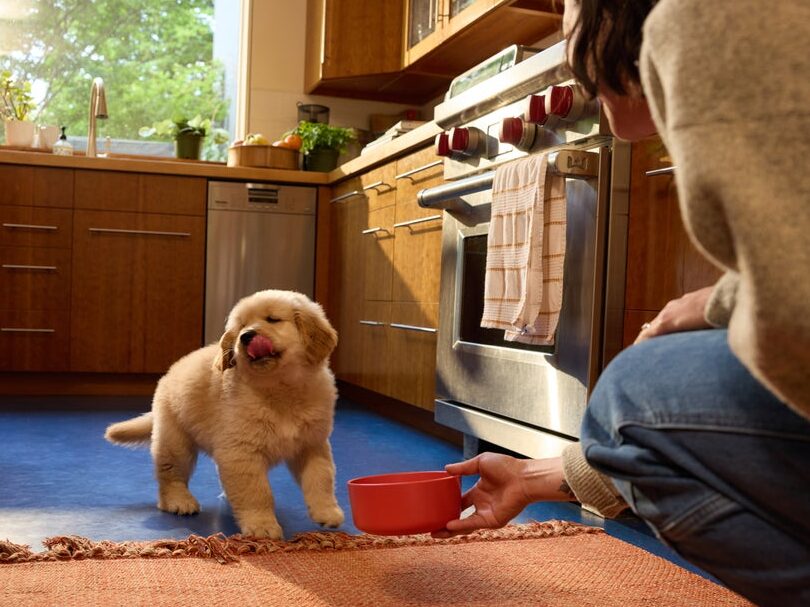Hey Ollie blog readers! We’re offering you an exclusive 60% OFF your starter box! Try now!
You come home from work and your pup greets you at the door with her tail high and wagging like crazy. Aww, she’s happy to see you…right? Maybe but not necessarily, says Scott Sheaffer, CDBC, CPDT-KA, a dog behavior specialist and founder of USA Dog Behavior. “Tail wagging is probably one of the most misunderstood dog behaviors there is,” he explains. “The popular thought is that if a dog’s tail is wagging, they’re happy, but that’s not always the case. The reality is much more nuanced than that.” To decode your dog’s mood, check out Sheaffer’s tips below.
Pay attention to tail position
The location of your dog’s tail says a lot about how they’re feeling. “Think of your dog’s tail position like a clock face; then imagine you’re standing next to your dog on their left side,” explains Sheaffer. “If your dog’s tail is straight up, at 12 o’clock, that means he’s becoming aroused; if it’s raised between 6 and 10 o’clock (arched over the back), that’s an indicator that your dog is highly aroused.” In other words, your pup is on high alert. Arousal can occur in a variety of situations: when their human comes home, when they’re about to be fed, or if they hear an intruder.
If your pup’s tail is in a neutral position, at around 3 o’clock, that means they’re in a neutral mood. “We have an expression: we like a tail low and slow,” says Sheaffer. “A tail that’s faintly wagging indicates that a dog is very relaxed.” If your pup’s tail is straight down or tucked under, that indicates fear or nervousness.
Additionally, “recent studies have shown that a dog that biases his tail wagging to the right is more likely to be experiencing positive arousal (i.e., he’s excited about food or wants to play) while tail wagging to the left tends to indicate more worrisome wagging,” says Sheaffer. “It’s that complex.”
Keep in mind your dog’s breed and body type
When it comes to the size and shape of their tail, every dog is different so you won’t be able to assess them the same way. Different breeds will have different neutral positions. “Think about the standard carriage of the breed,” suggest Sheaffer. “For example, an Akita has a tail that’s naturally high and tight so a raised tail doesn’t necessarily indicate arousal.” When studying your pup, always consider the natural shape of the tail.
Dogs that have docked tails, like English bulldogs or Australian Shepherds, will be even tougher to read, so you have to take other indicators like ear and eye position into account, says Sheaffer.
Consider other factors
Your dog’s tail is only one part of the equation when it comes to reading their mood. You should also pay attention to their eyes, ears, mouth position, and body rigidity. Dogs with wagging tails have bit people, notes Sheaffer, so you can’t assume a dog is happy and friendly if their tail is wagging. Here’s how you can tell if your dog is…
Happy: “The tail will be up and wagging,” says Sheaffer. “Look at the body rigidity; if the dog’s body is soft and wiggling, that means they’re relaxed and happy. They’ll also have really relaxed front legs, an open mouth, and soft ears.”
Fearful: “The dog’s ears will be pinned back, their head/body will be lowered, their body will be tense, and the tail will frequently be tucked,” says Sheaffer.
Attacking: “The dog’s mouth will be closed (generally), their body will be stiff and they’ll be standing tall on their front legs with their head held up high. Their eyes will be wide and the tail will be up really high,” says Sheaffer. If a dog is in this stance, bite risk is high.
Keep these tips in mind, and you’ll be one step closer to (sort of) understanding your doggo!
The Ollie blog is devoted to helping pet parents lead healthier lives with their pups. If you want to learn more about our fresh, human-grade food, check out MyOllie.com.
Tagged As:

The nutrition your dog needs,
the food they want.

Enjoying our articles? Subscribe our Newsletters and get new articles directly to your inbox
You might also like
23 September 2025
6 MINS READ
Back to School: Training Your Dog at Any Age
As we hit back-to-school season rolls around, it’s not just kids who benefit from sharpening their skills and learning something new—our dogs can, too! Training isn’t limited to puppies or p…
by Ollie Pets
23 September 2025
7 MINS READ
Lace Up and Leash Up: A Beginner’s Guide to Running with Your Dog
Running is one of the simplest ways to stay active, and it’s even better with a canine companion. Not only does running with your dog keep you both in great shape, it also strengthens your bond …
by Ollie Pets
13 May 2025
8 MINS READ
Puppy Training Guide & Behavior Timeline
Bringing home a puppy is pure magic. It’s also pure chaos—tiny teeth, zoomies, accidents in the house, and moments that make you wonder if you’re raising a future genius or a tiny tornado. …
by Ollie Pets







